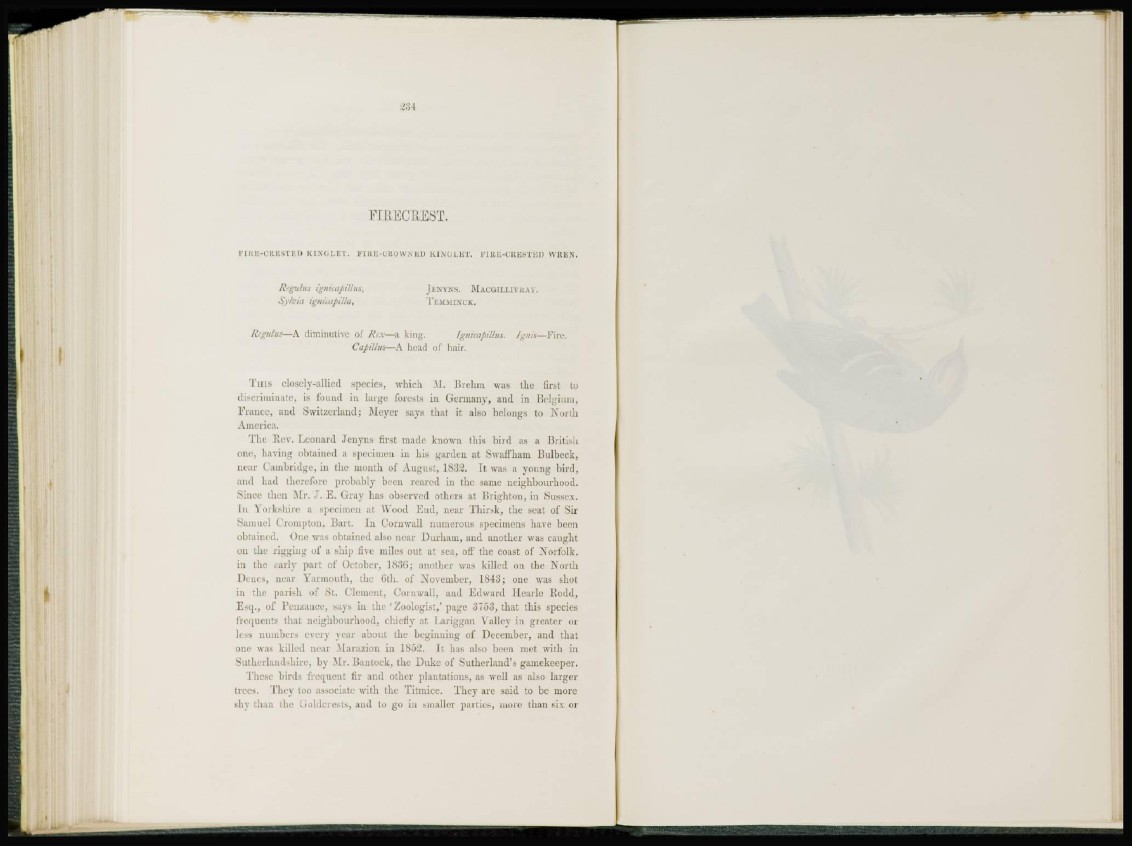
FIRECREST.
F I R E -0 R E ST E I > K I N G L E T . FIRE-ORO W N E l ) K I N G L E T . F1RK-CRES T E D W R E N.
Regains ignicapillns, JENYNS. MACGILLIVKAY.
Sylvia iguicapilla, TEMMLNCK.
Regains—A diminutive of Rex—a king. Ignicapillus. Ignis—Fire.
Capillus—A head of hair.
T H I S closely-allied species, which M. Brehm was the first to
discriminate, is found in large forests in Germany, and in Belgium,
France, and Switzerland; Meyer says that it also belongs to North
America.
The Rev. Leonard Jenyns first made known this bird as a British
one, having obtained a specimen in his garden at Swaffham Bulbcck,
near Cambridge, in the month of August, 1832. It was a young bird,
and had therefore probably been reared in the same neighbourhood.
Since then Mr. J . E. Gray has observed others at Brighton, in Sussex.
I n Yorkshire a specimen at Wood End, near Thirsk, the seat of Sir
Samuel Crompton, Bart. In Cornwall numerous specimens have been
obtained. One was obtained also near Durham, and another was caught
on the rigging of a ship rive miles out at sea, off the coast of Norfolk,
in the early part of October, 1836; another was killed on the North
Denes, near Yarmouth, the 6th. of November, 1843; one was shot
in the parish of St. Clement, Cornwall, and Edward llearle Eodd,
Esq., of Pcuzauce, says in the 'Zoologist,' page 3703, that this species
frequents that neighbourhood, chiefly at Lariggan Valley in greater or
less numbers every year about the beginning of December, and that
one was killed near Marazion in 1852. It has also been met with in
Sutherlandshire, by Mr. Bautock, the Duke of Sutherland's gamekeeper.
These birds frequent fir and other plantations, as well as also larger
trees. They l o o associate with the Titmice. They are said to be more
shy than the Goldcrests, and to go in smaller parties, more than six or